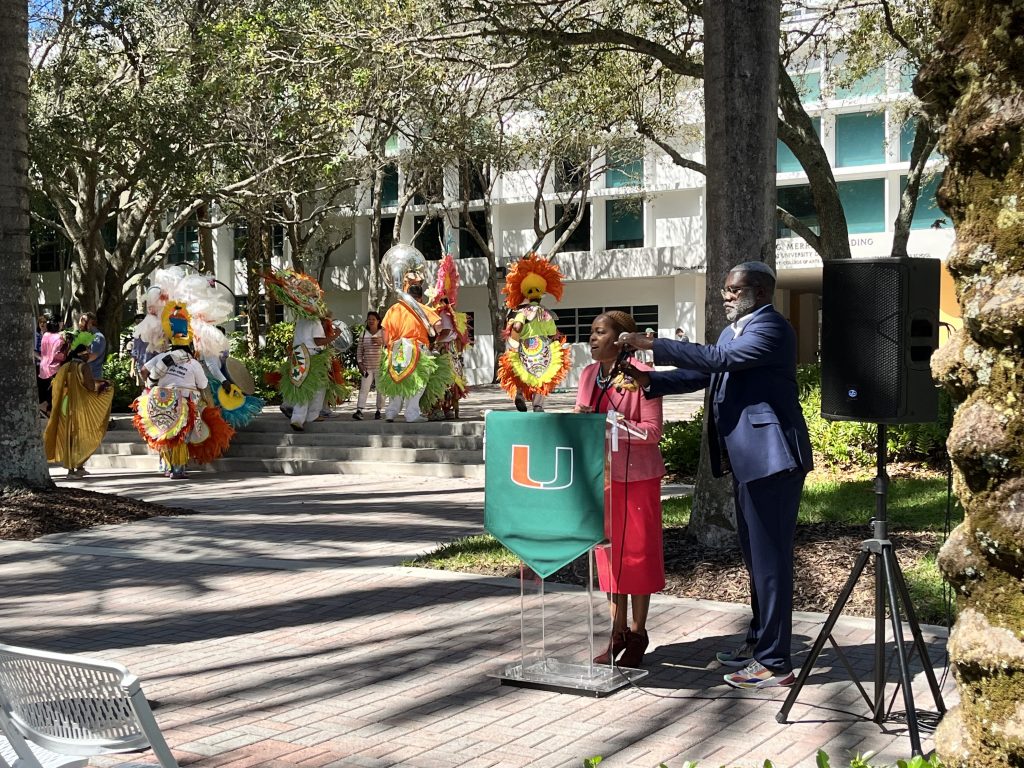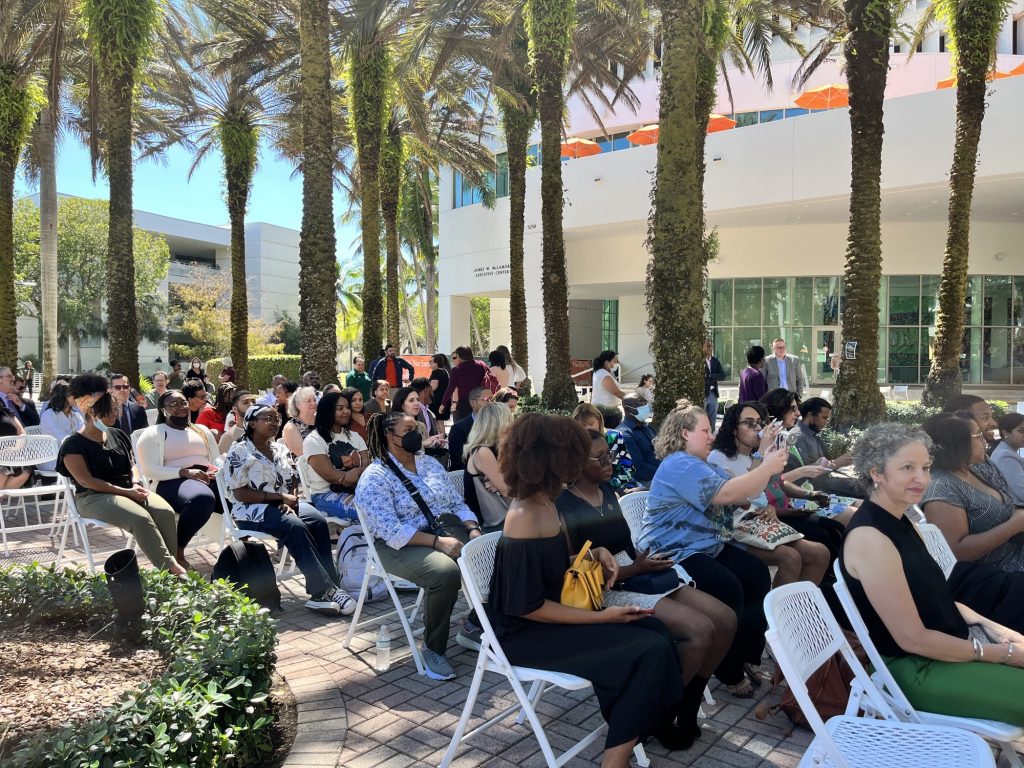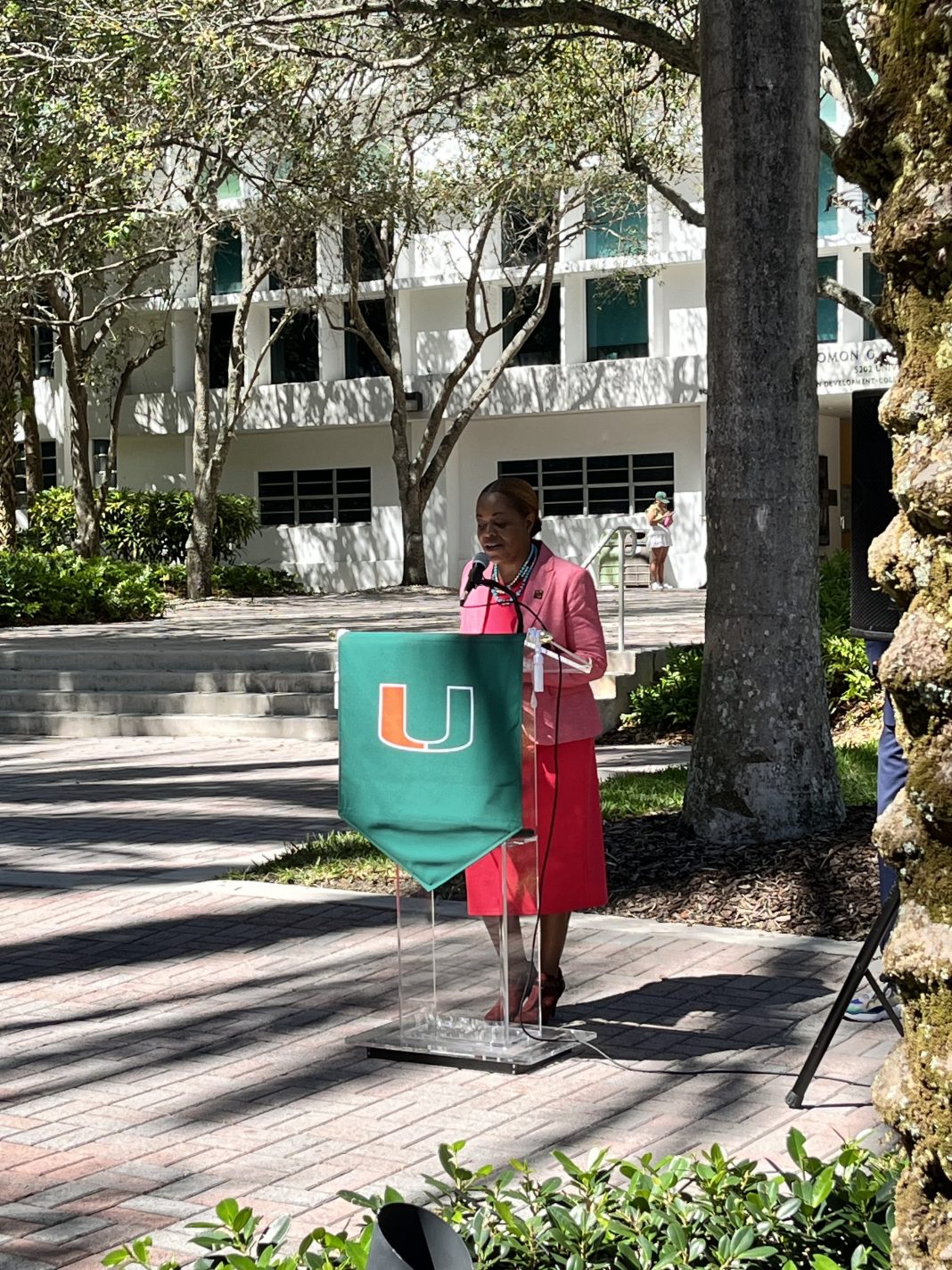On Monday Feb. 28, students, the University of Miami’s faculty and staff gathered to close out Black Awareness Month (BAM) by opening the doors to its brand new Center for Global Black Studies.
The Center for Global Black Studies is located on the third floor of the Solomon G. Merrick Building across rooms 305 and 306.
Donette Francis, co-director of the Center for Global Black Studies, kicked off the event by explaining that the Center for Global Black Studies “aspires to be the hub of Black intellectual life” through scholarship, research and academic relationships.
The facility’s overall mission of “improving the conditions of Black lives” locally, nationally and globally, as Francis said, was prominent throughout the event.
“What a great way to conclude Black History Month,” Special Advisor said on racial justice to President Julio Frenk, Professor Don Spivey.

Spivey suggested that the no. 1 challenge still facing the University of Miami was its racial climate. To further prove his point, Spivey invited people of color (POC) attendees to raise their hands if they objected to experiencing microaggressions on a daily basis, to which everyone kept their arms down.
“Our job is not done,” said Frenk when describing how the momentous occasion sharpened the university’s goal towards achieving their 15-point plan to improve and build upon diversity and inclusion.
Frenk also noted that he hopes the Center for Global Black Studies’ aim to become a “preeminent source of scholarship,” alongside the intellectual and cultural hemispheres of Miami, will “enable diverse voices to be heard.”
H.T. Smith Jr., a University of Miami trustee, alumnus and civic leader, provided insight on his time as a student at the university.
“If I wanted to see a Black employee, I had to wait until the custodial staff arrived in the evening,” Smith said.
He continued by explaining how the Center for Global Black Studies would put the University of Miami on the map.
Smith emphasized that the university was undergoing a “transitional moment” on its racial justice journey. He encouraged attendees to “walk out of the pain of yesterday into the promise of today” before closing with a prayer and a “life is good” saying.
On March 4, the Student Services Building was named after the late Harold Long and H.T Smith Jr., marking the first time in the University of Miami’s history that a building was named after two Black people.
Researcher, writer and Miami-native Nadege Green referenced Smith’s history within the civil rights movement when she said that the “same people arrested for those sit-ins are the same people who will have a building named after them in 30 years.”
Green expressed the difficulties when attempting to access Miami’s Black history, despite the city being the “site of global blackness.” She recalled that as a student at historically-segregated Miami Northwestern High School, Green witnessed University of Miami recruiters “come for the football players, but not for the straight-A students.”
“We want more Black professors, we want more Black visiting scholars and we want you to recruit more Black students,” Green said.

The ceremony ended with two UM students performing an original piece of poetry. Toni-Ann Farquharson, a senior studying industrial engineering and Cassandra Michel, a junior studying psychology and community and applied psychological studies, recited the text “Black Joy,” in which they told listeners that “they are not here because of magic,” but as a result of years of advocacy for justice.
Director of Africana Studies and a co-director of the Center for Global Black Studies, Jafari S. Allen provided emotional closing remarks before inviting attendees to join the Junkanoo dancers, who arguably stole the show, in celebration of this historic event. Attendees were invited to grab first-edition “Center for Global Black Studies” t-shirts and a taste of authentic Jamaican food on their way out.
This groundbreaking event for the Center for Global Black Studies represents a major milestone for the University of Miami on their path toward finding solutions for diversity and inclusion. Hopefully, the Center for Global Black studies will receive the support it deserves in order to thrive beyond UM’s Coral Gables campus for years to come.






